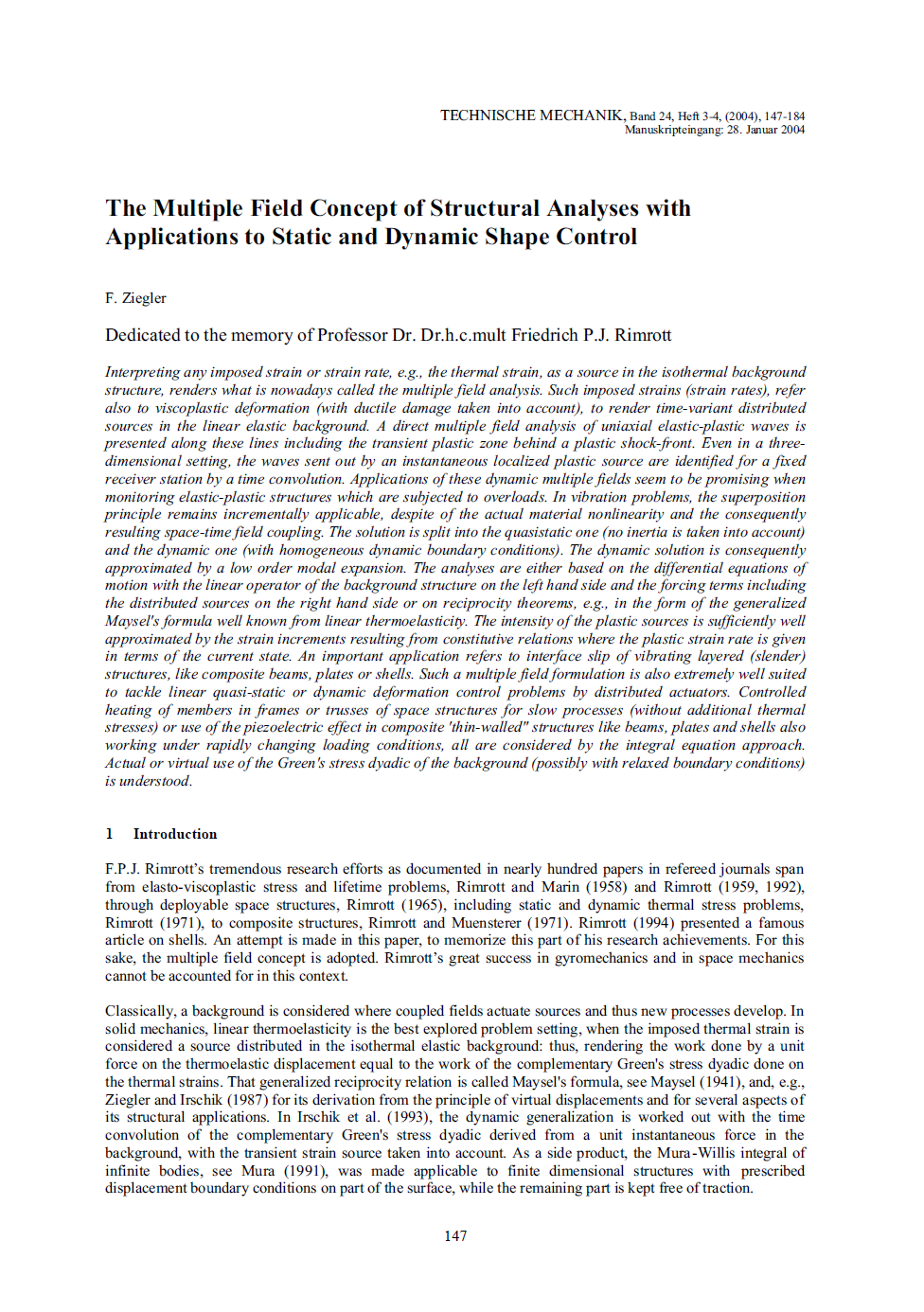The Multiple Field Concept of Structual Analyses with Application to Static and Dynamic Shape Control
Abstract
Interpreting any imposed strain or strain rate, e.g., the thermal strain, as a source in the isothermal background structure, renders what is nowadays called the multiple field analysis. Such imposed strains (strain rates), refer also to viscoplastic deformation (with ductile damage taken into account), to render time-variant distributed sources in the linear elastic background. A direct multiple field analysis of uniaxial elastic-plastic waves is presented along these lines including the transient plastic zone behind a plastic shock-front. Even in a three-dimensional setting, the waves sent out by an instantaneous localized plastic source are identified for a fixed receiver station by a time convolution. Applications of these dynamic multiple fields seem to be promising when monitoring elastic-plastic structures which are subjected to overloads. In vibration problems, the superposition principle remains incrementally applicable, despite of the actual material nonlinearity and the consequently resulting space-time field coupling. The solution is split into the quasistatic one (no inertia is taken into account) and the dynamic one (with homogeneous dynamic boundary conditions). The dynamic solution is consequently approximated by a low order modal expansion. The analyses are either based on the differential equations of motion with the linear operator of the background structure on the left hand side and the forcing terms including the distributed sources on the right hand side or on reciprocity theorems, e.g., in the form of the generalized Maysel's formula well known from linear thermoelasticity. The intensity of the plastic sources is sufficiently well approximated by the strain increments resulting from constitutive relations where the plastic strain rate is given in terms of the current state. An important application refers to interface slip of vibrating layered (slender) structures, like composite beams, plates or shells. Such a multiple field formulation is also extremely well suited to tackle linear quasi-static or dynamic deformation control problems by distributed actuators. Controlled heating of members in frames or trusses of space structures for slow processes (without additional thermal stresses) or use of the piezoelectric effect in composite 'thin-walled" structures like beams, plates and shells also working under rapidly changing loading conditions, all are considered by the integral equation approach. Actual or virtual use of the Green's stress dyadic of the background (possibly with relaxed boundary conditions) is understood.





